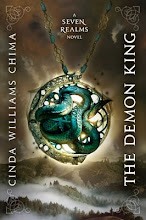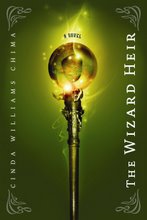I have a poor track record when it comes to seeing wildlife. We always arrive just as the buffalo herd has departed for the high country. Or where the bears chased the hikers into the lake two days ago. Or where the signature species has just declined from threatened to extirpated (a word I learned on my beach walk at Point Wolff, Fundy National Park, yesterday.)
Part of it is, I don’t pay attention. The conventional wisdom is, writers have a keener eye than normal people. Me, I’m focused on the fascinating stories in my head. I wouldn’t survive a minute as a mouse—that hawk would snatch me up while I was making up stories about the doings down by the creek.
Even if my hawkeye husband spots something, it takes me so long to hear and react, the animal opportunity is gone before I can fully participate. Sometimes I claim I saw it anyway, because I am so tired of missing everything. That sort of behavior can get you into trouble if you are married to a trickster.
So we’ve been in moose country for a week now. Everywhere there are signs of moose—and not the kind of “moose sign” rugged, hunky guides talk about on wildlife shows. No, these are official signs along park trails and highways warning of the possibility of moose encounters and offering instructions for what to do when it happens.
We writers are notorious scaredy-cats. We can imagine all sorts of horrific things happening. We do it for a living, after all.
So I study the guidelines, committing them to memory as if it were a surgical manual and I was about to operate on my mother. I develop my plan of action--just like in bear country where I walked the trails, singing campfire songs like a lunatic to warn any nearby bears we were coming. It must have worked, because I saw no bears. Only worried hikers.
We do see some wildlife. I see a red fox near the border crossing in Maine. I see a frog in Bar Harbor.
I see lots of red squirrels in New Brunswick.As night falls, brown hares are partying along the Matthews Head trail along the Bay of Fundy. We see invasive European green crabs on the Fundy beach and a rat in the Public Garden in Halifax. Canadian black flies feast on my tender Midwestern flesh.
I see no moose.
So I’m in a gift shop in Vermont, sheltering from a downpour, and the subject naturally turns to moose.
“I’ve lived heah more than twenty years,” a customer says. “Never seen a moose in Vermont.”
“Really?” I say, feeling somewhat vindicated.
“The only moose I ever saw were in Ohio. Saw moose twice, over theah.”
I furrow my brow suspiciously. Maybe that’s how the locals have fun with tourists from Ohio. But I haven’t mentioned being from there, and I came in a car with Connecticut license plates.
“Ohio? Moose in Ohio?” I say.
The woman nods. “I’m thinking they likely came over from Pennsylvania. Wild country over theah.”
It figures. I come to the northeast, hunting moose, only to find they’ve just left for Ohio.
Showing posts with label Vermont. Show all posts
Showing posts with label Vermont. Show all posts
Thursday, August 19, 2010
Monday, January 28, 2008
Kindling Words 2008

I’m leaving Vermont at the end of another Kindling Words. The hugs and kisses have been exchanged, the promises made, the connections that lie between us as writers reinforced, spun into tensile strength. It’s a web that extends from Tucson to Texas to New York City, from Iowa and Chicago to Florida and Atlanta. One of the blessings of the Internet is that we can find our kindred, wherever they are. But sometimes we just have to meet face to face.
For those of you who don’t know, Kindling Words is a conference/retreat for published writers, illustrators, and editors, where the focus is on craft and renewal. It’s a kind of cult ritual, an orgy of fellowship, a revival meeting (complete with spirituals sung about a bonfire) that heals and energizes. And lest you think we spent the whole time singing “Kumbaya,” our goddess presenters were Laurie Halse Anderson, (writers) Vera Williams (illustrators) and Cecile Goyette (editors).
Laurie spoke about the smack-down match between character and plot. We concluded that the relationship between character and plot is less a battle than an erotic, tangled embrace that births story (author fans self rapidly).
Laurie also hosted a lunchtime “white space” session on her “five-year plan,” subtitled (by me) Beyond Romance—How to Keep Body and Soul Together as a Full time Writer. It was practical advice for anyone who wants to make a living as a writer. I was especially impressed by her inclusion of volunteering and what she called “family drama” time in her plan for living.
I’m such a fan girl, and participants in the conference are so generous with their time. I attended Jane Yolen’s informal session on whether and how to find an agent, not because I am looking for an agent (hi, Christopher!), but because I just wanted to hang out in Jane’s room. Of course, I couldn’t help learning a lot from the plain-spoken Jane.
As important as the formal presentations is the opportunity to learn from true peers. They’ve often already solved the problems I’m wrestling with—even something as simple as how to resist the siren call of the Internet when you’re on deadline. Probably one of the most important lessons of KW is that there is no one right way to do things.
Some writers begin the writing process with character. Others with plot. Usually we start with the element we’re most comfortable with.
Some of us revise as we go along. Others of us vomit on the page, writing in a white heat until the bones of the story are down. Some of us love revision. Newbury-winner and keynote speaker Linda Sue Park said that writing is revision.
Speaking of Linda Sue, emblematic of this diversity of technique was the smack-down battle between Laurie and Linda. They disagreed on almost everything—and both are gifted, productive, genius writers.
On Saturday afternoon, the nine editors attending (including my own Arianne Lewin!) graciously answered our questions in a roundtable. More plain speech. As in any kind of therapy, first we have to be honest with each other.
That night, twenty geniuses shared their souls in five-minute increments during the candlelight readings. Themes ranged from incest to faeries to badger parenthood. Formats ranged from brilliant picture book rhymes to Green poetry to YA novel. At one point a choir of dissonant frogs emerged from the audience. It was that kind of night.
And, finally, the bonfire of wishes and dreams. We sang camp songs, folk songs, antiwar ballads, and show tunes. There is something elemental and primitive about assembling around a fire. It forges a connection that can carry us as missionaries into a world that sometimes seems bent on stomping on our souls.
I mean, I sang harmony with Gregory Maguire and actually felt in context.
Finally, we cast our prayers and dreams into the fire, watching the flames exhale them toward the stars, hoping to catch the ear of God.
I could write a whole blog of thank yous. Thank you to the mystic healer Alison James, who streams magic, to the wise Tanya Lee Stone, to Marnie Brooks, who called down blessings from the top of the stairs, to the always generous Nancy Werlin, to wise counselors Martha Levine, Mikki Knudsen, Laurie Calkhoven, and many others unnamed. Thanks to everyone who helped this happen.
For those of you who don’t know, Kindling Words is a conference/retreat for published writers, illustrators, and editors, where the focus is on craft and renewal. It’s a kind of cult ritual, an orgy of fellowship, a revival meeting (complete with spirituals sung about a bonfire) that heals and energizes. And lest you think we spent the whole time singing “Kumbaya,” our goddess presenters were Laurie Halse Anderson, (writers) Vera Williams (illustrators) and Cecile Goyette (editors).
Laurie spoke about the smack-down match between character and plot. We concluded that the relationship between character and plot is less a battle than an erotic, tangled embrace that births story (author fans self rapidly).
Laurie also hosted a lunchtime “white space” session on her “five-year plan,” subtitled (by me) Beyond Romance—How to Keep Body and Soul Together as a Full time Writer. It was practical advice for anyone who wants to make a living as a writer. I was especially impressed by her inclusion of volunteering and what she called “family drama” time in her plan for living.
I’m such a fan girl, and participants in the conference are so generous with their time. I attended Jane Yolen’s informal session on whether and how to find an agent, not because I am looking for an agent (hi, Christopher!), but because I just wanted to hang out in Jane’s room. Of course, I couldn’t help learning a lot from the plain-spoken Jane.
As important as the formal presentations is the opportunity to learn from true peers. They’ve often already solved the problems I’m wrestling with—even something as simple as how to resist the siren call of the Internet when you’re on deadline. Probably one of the most important lessons of KW is that there is no one right way to do things.
Some writers begin the writing process with character. Others with plot. Usually we start with the element we’re most comfortable with.
Some of us revise as we go along. Others of us vomit on the page, writing in a white heat until the bones of the story are down. Some of us love revision. Newbury-winner and keynote speaker Linda Sue Park said that writing is revision.
Speaking of Linda Sue, emblematic of this diversity of technique was the smack-down battle between Laurie and Linda. They disagreed on almost everything—and both are gifted, productive, genius writers.
On Saturday afternoon, the nine editors attending (including my own Arianne Lewin!) graciously answered our questions in a roundtable. More plain speech. As in any kind of therapy, first we have to be honest with each other.
That night, twenty geniuses shared their souls in five-minute increments during the candlelight readings. Themes ranged from incest to faeries to badger parenthood. Formats ranged from brilliant picture book rhymes to Green poetry to YA novel. At one point a choir of dissonant frogs emerged from the audience. It was that kind of night.
And, finally, the bonfire of wishes and dreams. We sang camp songs, folk songs, antiwar ballads, and show tunes. There is something elemental and primitive about assembling around a fire. It forges a connection that can carry us as missionaries into a world that sometimes seems bent on stomping on our souls.
I mean, I sang harmony with Gregory Maguire and actually felt in context.
Finally, we cast our prayers and dreams into the fire, watching the flames exhale them toward the stars, hoping to catch the ear of God.
I could write a whole blog of thank yous. Thank you to the mystic healer Alison James, who streams magic, to the wise Tanya Lee Stone, to Marnie Brooks, who called down blessings from the top of the stairs, to the always generous Nancy Werlin, to wise counselors Martha Levine, Mikki Knudsen, Laurie Calkhoven, and many others unnamed. Thanks to everyone who helped this happen.
Subscribe to:
Posts (Atom)













